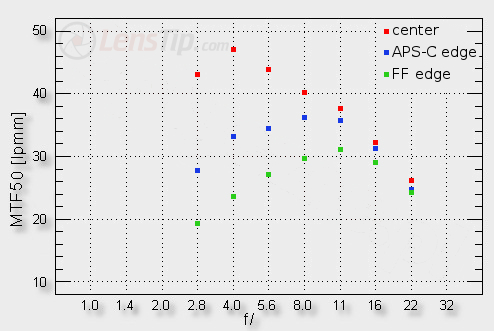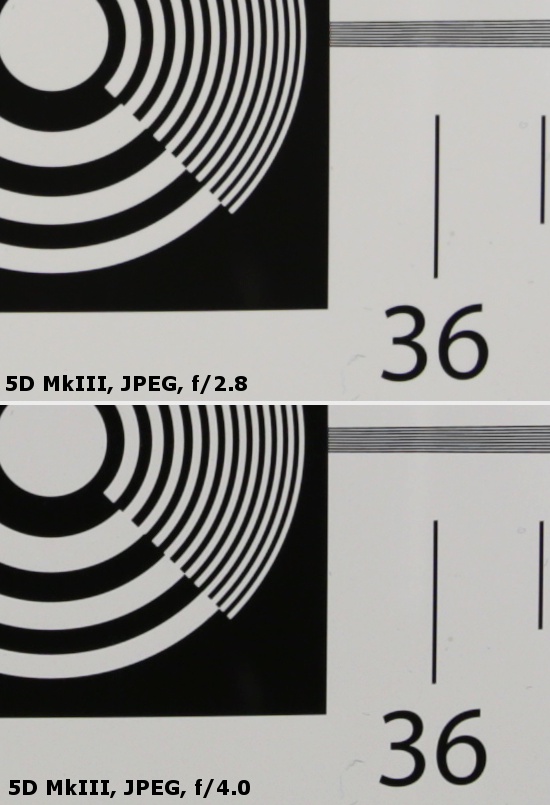Samyang 12 mm f/2.8 ED AS NCS Fish-eye
4. Image resolution
The graph below shows the performance of the tested lens in the frame centre, on the edge of the APS-C/DX sensor and on the edge of full frame.

Please Support UsIf you enjoy our reviews and articles, and you want us to continue our work please, support our website by donating through PayPal. The funds are going to be used for paying our editorial team, renting servers, and equipping our testing studio; only that way we will be able to continue providing you interesting content for free. |
- - - - - - - - - - - - - - - - - - - - - - - - - - - - - - - - - - - - - - - - - - - - - - - -
The situation in the frame centre should only be called brilliant – really no other word fits here better. Already at the maximum relative aperture the MTFs reach 43 lpmm and on stopping down the aperture to f/4.0 they come near record-breaking values of 47 lpmm. The tested lens can deservedly be praised a lot for such a performance.
The situation changes significantly when you look at the edge of the frame because the results are weak. Still you must ask yourself whether they are reliable. The deformations provided by a fisheye lens mean the areas used for resolution measurement are not only distorted but also packed together rather tightly. As a result any measurement area on the edge of the APS-C sensor and any MTF measurement area on the edge of full frame are not far from each other, as expressed in pixels. It would be difficult to escape those problems with such an untypical lens as a fisheye; its test must look differently than other tests of rectilinear instruments.
Our assessment can be also problematic because we haven’t tested any full frame fixed-focus fisheye lenses yet so we lack any comparison scale. However, when you check the performances of lenses designed for smaller sensors you see there have been similar performances observed. For example the Sigma 10 mm f/2.8 EX DC FISHEYE HSM fared brilliantly in the frame centre and was very weak on the edge. Still the Samyang 8 mm f/3.5 Aspherical IF MC Fish-eye didn’t have such problems, with small discrepancies between the frame corner and its centre.
A mediocre image quality on the edge of the frame of the tested Samyang 12 mm f/2.8 ED AS NCS Fish-eye is not only a problem of mapping, deformations and a specific distance from our testing chart. One glance at sample shots, shown in the last chapter, proves that it would be difficult to call the edge of the frame by f/2.8 and f/4.0 apertures sharp.
At the end of this chapter we present crops taken from photos of our resolution testing chart, saved as JPEG files along with RAW files, used for the analysis above.
 |






